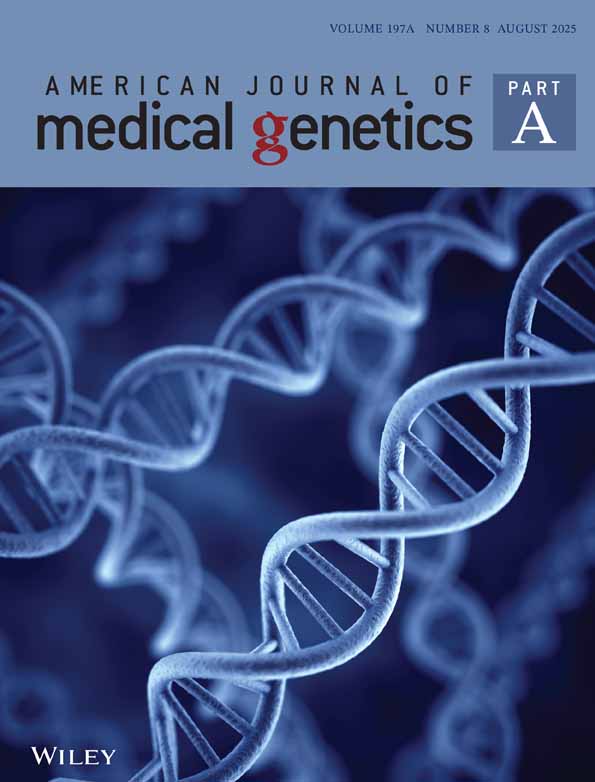Burning down DEFECT11
To the Editor:
In 1996, we described several patients showing a similar phenotype owing to chromosome 11 aberrations (MIM 601224) and introduced the mnemonic acronym DEFECT11 (Deletions on chromosome 11p with Enlarged Foramina, multiple Exostoses, Craniofacial dysotosis and menTal retardation), to refer to this clinical entity [Bartsch et al., 1996]. However, soon after its launch, the term DEFECT11 became the subject of debate, as some people found it had negative connotations. DEFECT11 thus suffered the same experience as some of its predecessors like CATCH22 [Wilson et al., 1993] and CRASH syndrome [Fransen et al., 1995]. These acronyms, which were initially appreciated by many because of their originality and memorability, soon received growing opposition from others, who felt a strong aversion to their negative associations. As this aversion is often based on the views of patient groups or patients' relatives, reconsideration of such disease acronyms is appropriate and several pleas have since been made to discontinue these terms [Schrander-Stumpel, 1998; Burn, 1999]. A first possibility to avoid use of DEFECT11 would be to replace it with another acronym. Since the introduction of this term, additional patients have been described, widening the clinical spectrum. Therefore, one could ask whether DEFECT11 even still represents a good descriptive acronym. Clinically, all patients show multiple exostoses (EXT) from childhood onwards and most have foramina parietalia permagna (FPP), with the latter phenotype sometimes absent due to reduced penetrance. Additional features seem to depend on the extent of the deletion and are by no means mandatory. Therefore, eponyms such as EXT-FPP phenotype or EXT/FPP deletion syndrome could serve as alternatives, but they have a limited coverage and do not fully represent the clinical aspects.
Recently, the acronym DEFECT11 has been removed from the OMIM database and “Deletion 11 contiguous gene syndrome” and “Potocki-Shaffer syndrome” have been suggested for this condition. As co-authors in the initial molecular characterization of this syndrome, we have several objections to the use of these terms. On historical grounds, many disorders carry the name(s) of the first person(s) who described them. If this is recognized right from the start, the association of particular names with a disorder may be uncontroversial. However, the retrospective assignment of names to a syndrome such as DEFECT11 is less straightforward. Isolated patients were clinically described more than four decades ago [Wiedemann, 1960], while the first association of a possible DEFECT11 phenotype with chromosome 11p deletion was reported by Francke et al., 1977. The first family segregating this phenotype was described by Shaffer et al. [1993] but the authors interpreted the presence of EXT with the other signs as a chance association [Shaffer et al., 1993]. A revised clinical description and detailed molecular delineation of this syndrome was first provided by Bartsch et al. [1996] and later by Potocki and Shaffer [1996]. Based upon the chronological description of the syndrome, “Potocki-Shaffer syndrome,” as currently suggested in OMIM and in a recent paper of which Potocki and Shaffer are co-authors [Wu et al., 2000], is therefore not the most logical name for this condition. In fact, owing to the stepwise characterization of this syndrome, it is probably not advisable to attempt replacement of DEFECT11 by a term composed of the names of single or multiple individuals.
The problems with OMIM's alternative “Deletion 11 contiguous gene syndrome” are twofold. Not only is it a long term that does not trip well off the tongue, more importantly, it has a poor descriptive content that lacks specificity. Indeed, it does not distinguish at least two other contiguous gene syndromes of chromosome 11; the WAGR syndrome (MIM 194072), which is located more distally on chromosome 11p, and Jacobsen syndrome (MIM 147791), on 11q. To avoid confusion with these other syndromes, it is necessary to specify the smallest common deleted region in DEFECT11 patients which is the most proximal part of 11p (bands 11p11-p12).
In conclusion, reflecting John Burn's suggestion for CATCH22 [Burn, 1999], it may also now be “closing time” for DEFECT11. Taken into account all the possibilities, we propose that “proximal 11p deletion syndrome (P11pDS)” would be the most suitable alternative to refer to this syndrome in the future.




